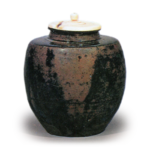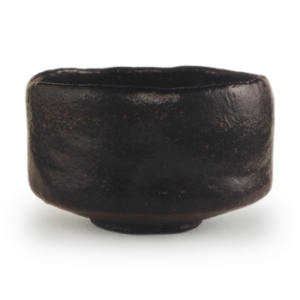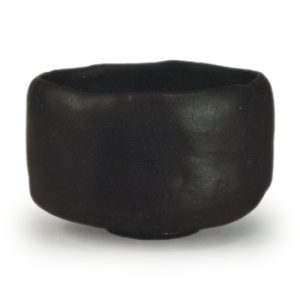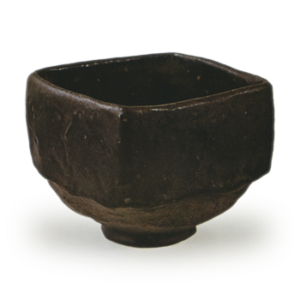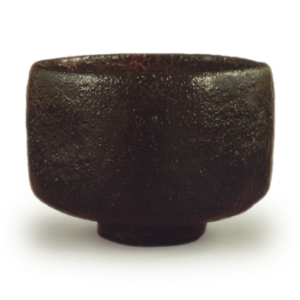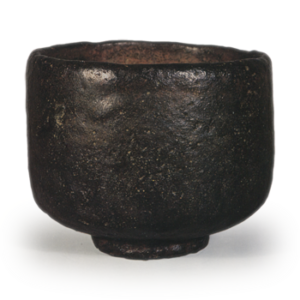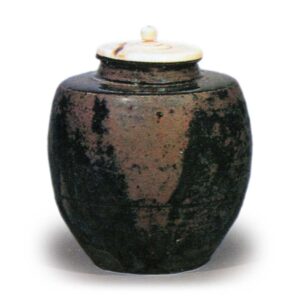
A great masterpiece. This tea caddy was made by Han. This tea caddy was the most respected of the Daimonomono tea caddies from ancient times and was owned by the Sakai merchant Aburaya Tsunen (Jogen) and his son Tsuneyusuke (Josuke). It is a little smaller in diameter than other tea caddies of the same type, and has a single ring stripe around the steamer. It also has a chinkuji around the waist, and the position of the chinkuji is slightly lower than that of other tea caddies. The overall color is persimmon-gold with a black candy glaze over it, and the oki shape has a pattern of a waist cord that extends from the bottom of the shoulder down to the bottom of the bowl. There is a small fireplace on the right hand side facing this oki kata. The glaze is superb throughout, with many colors of gold, blue, brown, and other colors, and the scenery is comprehensive, with something to see on every surface. The bottom of the bowl shows dark gray clay, and the bottom has a raised board. At the Kitano Grand Tea Ceremony in 1587, Toyotomi Hideyoshi ordered Jogen to present this pottery and gave him three hundred coins and Kitano eggplants in exchange. In 1626, Shogun Hidetada gave it to Toshikatsu Doi, but due to financial difficulties in the Doi family, it was sold to Mizuken Kawamura and soon after to Kiheiji Fuyuki. Then, during the Temmei era (1781~9), it came into the hands of the Fuyuki family or Matsudaira Fumai, whose family fortunes were gradually declining. This tea caddy was said to be worth 10,000 ryo, but the Fuyuki family’s fortune declined due to famine, and the value was only 1,500 ryo. Fumai, who had seen tea caddies all over the world, knew more and more about the excellence of this tea caddy, and especially loved it. To the three original bags, he added bags made of Taishi Koto, Honnoji Danshi, and Shimotsuma Danshi, and placed them in an oi chest with an inscription by Rikyu and a Wakasa tray, along with an ink inscription by Kengo, the highest-ranking scholar among Fumai’s possessions. The oi chest still contains this oi chest today. When the samurai would go to the main camp, they would carry it in front of the oi, and even after arriving at the main camp, the oi would not sit down before the oi was placed on the floor. It is said that no one in the family could see it, not even the family retainer, and even he could only view it once in his life. This shows the extent of its treasuring. It is said that when the Marquis of Satsuma jokingly asked Fumai what he would do if the Shogun requested it, Fumai replied that he could not refuse the Shogun’s order, but that he would like to receive a portion of Oki Province. (Ko-ko-in Meimono Ruiju, Rimpo Kame Ryu, Shokei Meikishi Shu, Kokei Meimono Ki, Rikyu Hyakkai Kai, Unshu Hozomono Denraisho, Matsudaira Fumai Den, Taisho Meikikan, etc.)

